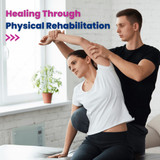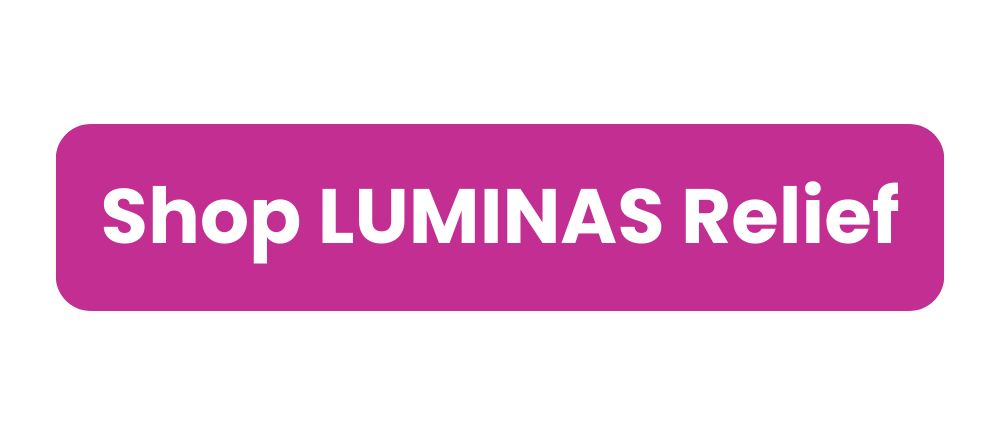Healing Through: Physical Rehabilitation
Physical medicine and rehabilitation is a treatment method that is designed to help individuals recover from injuries or surgeries. The goal of it is to help individuals regain strength, flexibility, and mobility so that they can return to their normal activities. Physical rehabilitation can be used to treat a variety of conditions, including sports injuries, back pain, arthritis, and more.
Rehabilitation for injuries and pain typically involve a series of exercises and stretches that are designed to help individuals regain strength and flexibility. These exercises may be done in a physical therapy clinic, or they may be done at home. Rehabilitation may also include the use of heat or cold therapy, massage, and other treatments that are designed to help reduce pain and inflammation.
Understanding Pain and Inflammation
Before we dive into the science behind physical rehabilitation, it's important to understand pain and inflammation. Pain is the body's way of signaling that something is wrong. It is a protective mechanism that helps prevent further injury. Inflammation, on the other hand, is the body's response to injury or infection. It is a natural process that helps the body heal.
While pain and inflammation are natural processes, they can also be detrimental. Chronic pain and inflammation can lead to a variety of health problems, including depression, anxiety, and decreased mobility. This is why it's important to address pain and inflammation as soon as possible.
The Science Behind Physical Rehabilitation
Physical rehabilitation has many benefits for pain and inflammation recovery. By strengthening muscles and improving flexibility, physical rehabilitation can help reduce pressure on joints, which can help reduce pain and inflammation. It works by targeting the underlying cause of pain and inflammation. The exercises and stretches that are used in physical rehabilitation help to strengthen the muscles and improve flexibility, which can help reduce pain and inflammation. Exercises are designed to gradually increase the workload on the muscles, which helps to build strength and endurance over time. As muscles get stronger, they are better able to support the body and perform everyday tasks with greater ease. It causes the blood vessels to dilate, which increases blood flow to the muscles and other tissues. This increased blood flow can help to deliver more oxygen and nutrients to the cells, which can improve overall health and function. Exercises also help to lengthen and loosen tight muscles, which can help to reduce stiffness and improve range of motion. Improved flexibility can also help to prevent injuries by allowing the body to move more freely.
Types of Physical Rehabilitation
There are many different types of physical rehabilitation, and the type of program that is best for you will depend on your specific needs. Some of the most common types of physical rehabilitation include:
- Orthopedic physical therapy: This type of physical therapy is designed to help individuals recover from orthopedic injuries, such as fractures, sprains, and strains.
- Neurological physical therapy: This type of physical therapy is designed to help individuals recover from neurological conditions, such as stroke, Parkinson's disease, and multiple sclerosis.
- Cardiovascular and pulmonary physical therapy: This type of physical therapy is designed to help individuals recover from heart and lung conditions, such as heart attack, chronic obstructive pulmonary disease (COPD), and asthma.
Choosing the Right Physical Rehabilitation Program
Choosing the right physical rehabilitation program is important for achieving the best results. When choosing a program, it's important to consider the following:
- Your specific needs: The severity of the injury or condition will often determine the type and intensity of the rehabilitation program required. For example, a minor muscle strain may only require a few weeks of rest and gentle exercises, while a more serious injury, such as a broken bone or spinal cord injury, may require a more intensive and long-term rehabilitation program.
- The qualifications of the physical therapist: The qualifications and experience of the healthcare provider or physical therapist overseeing the rehabilitation program is another important factor to consider. It's important to choose a provider who is experienced and knowledgeable in the specific condition or injury being treated, as well as in the specific type of rehabilitation program being used.
- The location and hours of the physical therapy clinic: The availability of the necessary equipment and resources is also important to consider. Depending on the nature of the injury or condition, certain equipment or facilities may be required to achieve the best results. It's important to choose a program that has access to the necessary equipment and resources to ensure a successful rehabilitation outcome.
Tips for Success with Physical Rehabilitation
These include following the rehabilitation program as directed by your healthcare provider or physical therapist, staying committed to the program even when it becomes challenging, maintaining good communication with your healthcare provider or physical therapist, and taking care of your overall health and well-being.
Following the rehabilitation program as directed is critical to achieving the best results. This may involve performing specific exercises, using certain equipment or devices, and making lifestyle changes as recommended by your healthcare provider or physical therapist.
It's also important to stay committed to the program, even when it becomes challenging or progress seems slow. Rehabilitation can be a difficult and sometimes frustrating process, but staying positive and motivated can help ensure success.
Good communication with your healthcare provider or physical therapist is also essential. This includes reporting any changes in symptoms or progress, asking questions, and providing feedback about the effectiveness of the program.
Finally, taking care of your overall health and well-being is important for successful rehabilitation. This may include getting enough rest, eating a healthy diet, managing stress, and avoiding unhealthy habits such as smoking or excessive alcohol consumption.
By following these tips and working closely with your healthcare provider or physical therapist, you can increase your chances of achieving successful rehabilitation outcomes and improving your overall health and well-being.
Combining Physical Rehabilitation with Other Treatments
Physical rehabilitation can be combined with other treatments for chronic pain and inflammation, such as LUMINAS Relief Electroceutical Patches and acupuncture.
This can help improve the effectiveness of the treatment and provide additional relief for individuals with chronic pain and inflammation. LUMINAS Relief Electroceutical Patches can mitigate the negative effects of chronic pain and inflammation. They are drug-free electroceutical patches and are a great addition alongside hydrotherapy. Plus, our Relief Tan Patches are water-resistant, meaning they’re perfect for activities and will remain adhered to the skin through treatments!
LUMINAS uses the electron signatures of ingredients known to reduce pain and inflammation. These patches have an edge over competitors because they last 24 hours and begin to work in as little as 15 minutes, compared to most pain-relieving products. These patches are clinically proven, with no side effects, and are safe for all ages.
Overall, physical rehabilitation is an effective treatment method for pain and inflammation recovery. By targeting the underlying cause of pain and inflammation, it can help individuals regain strength, flexibility, and mobility. If you are experiencing pain or inflammation, physical rehabilitation may be an effective treatment option for you.










